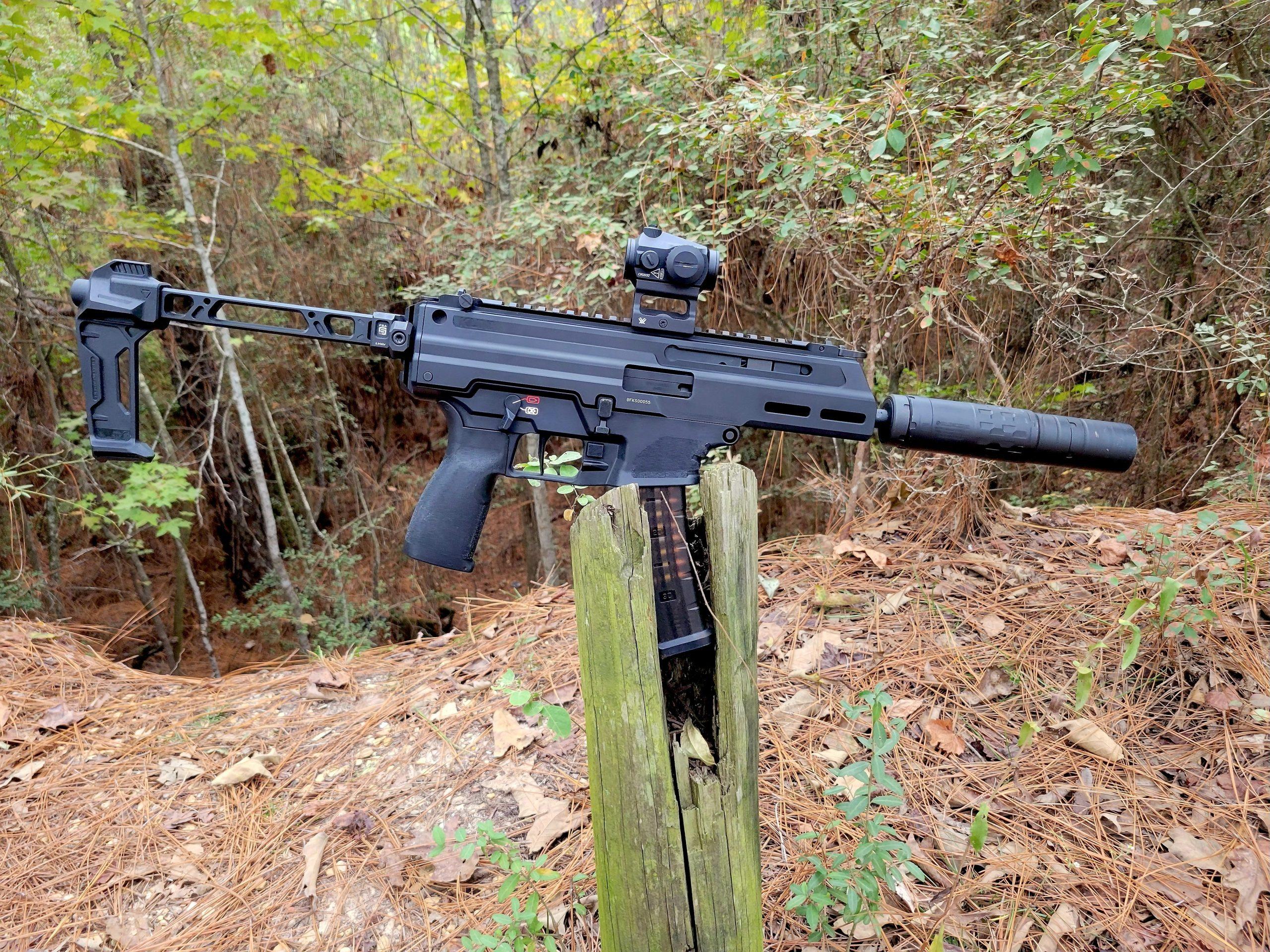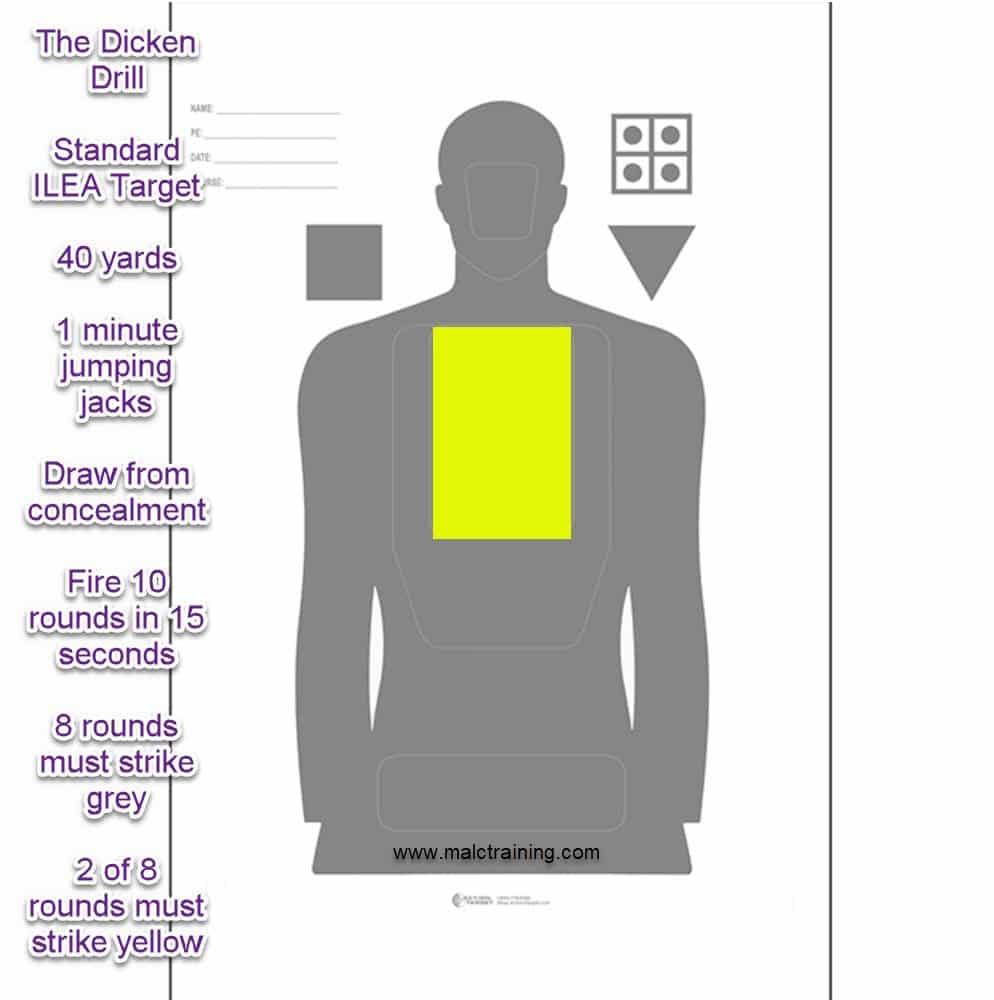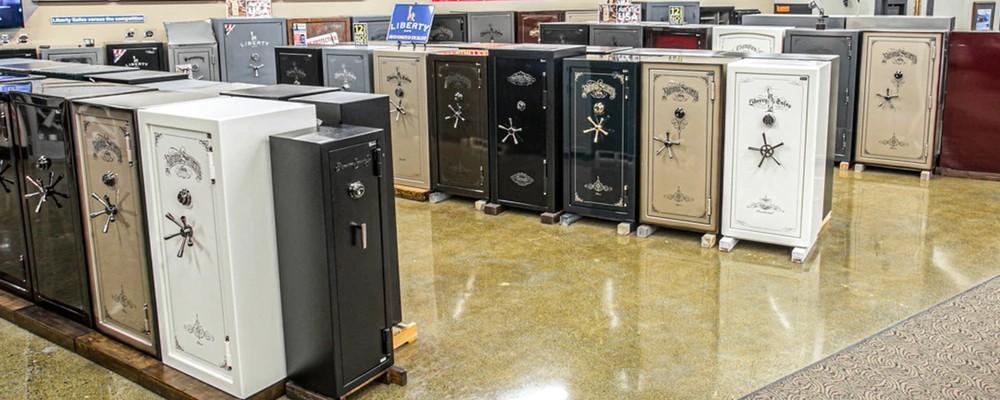Top 6.5 Creedmoor Suppressor Picks: Silence is Golden
From quiet hunting to tactical precision, there's no shortage of 6.5 Creedmoor suppressors to choose from. We break down our favorites for superior performance with the 6.5CM.
Written By
Michael Crites
Licensed Concealed Carry Holder
Reviewed by
Editorial Team
Learn About The Editorial Team
Share:
Products are selected by our editors. We may earn a commission on purchases from a link. How we select gear.

Updated
Sep 2023
Lauded for its long-range performance capabilities, the 6.5 Creedmoor cartridge is a newer entry into the centerfire world (introduced in 2007). And it’s a great choice – the 6.5 Creedmoor is an incredibly capable round that retains the punch of larger diameter bullets at long range. The thing that makes it special is that it is exceptionally flat-shooting thanks to its sheer muzzle velocity.
That makes it an excellent round for target and precision shooting as well as the hunting world. It was designed for long-range performance from precision rifles, and it does that job exceptionally well.
When considering suppressing the 6.5 Creedmoor rifle, those precision engineering and high-performance characteristics mean you need a suppressor that’s optimized for precision bolt-action rifles.
Suppressors reduce the sound and flash signature of a rifle – and we’re not talking just 2-3db quieter – a quality rifle suppressor will provide substantial noise and flash reduction, often up to a full 30db.
There is a fair bit to learn about suppressing a rifle, but balancing the right muzzle brake or flash hider, with an appropriate barrel length and the right suppressor can yield remarkable results.
In This Article
6.5 Creedmoor Suppressor Comparison
Below is my list of the best 6.5 Creedmoor suppressors. I list the best choices in terms of value, performance, design, and cost.
Click on the name to head to the product page, read reviews and check prices or skip ahead to the list of suppressors.
| Name | Selection | Caliber | Length | Weight |
|---|---|---|---|---|
Lightest | 7.62/.308 | 7” & 9” | 10 oz. (7”) & 13 oz. (9”) | |
Runner-Up | 7.62/.308 | 8.4” | 19.5 oz. | |
Multi-Cal Pick | Multi | 7.6″ | 14.1 oz. | |
Shortest | 7.62/.308 | 6.8" | 17.7 oz. | |
Also Great | 7.62/.308 | 9" | 14.8 oz. |
Important Suppressor Considerations
Suppressors are muzzle devices that attach to the end of your barrel to reduce sound and flash when a bullet exits the barrel of a gun.
They’re great to have if you shoot a lot and want to reduce the impact on your hearing, but they aren’t cheap and you need to consider a few factors if you want to make the right investment.
1. Cost
You may have noticed that suppressors aren’t inexpensive. Why is that?
Much like any product, things like the cost of materials, expected service life, method of fabrication, production volume, demand and competition all factor into the cost of suppressors, but some features require more investment than others.
For example, you’ll see the term “full-auto-rated” on many suppressors — this essentially means your shiny new $1,000 suppressor won’t melt into a useless muzzle lump after heating to obscene temperatures. This takes thoughtful engineering & tough material, none of which is cheap.
Of course, not all of us will be mag-dumping 30 rounds at a time until we achieve white-hot status on an IR thermometer. We might just want a suppressor that will keep the dBS down and neighbors happy. There’s nothing wrong with that.
2. Attachment Mechanism
As charming as a duct-taped 2-liter may look in the world of moving pictures, you’re probably in the market for something a little more durable.
Suppressors come in two primary attachment methods, direct thread and quick detach, with their nuances.
Direct-Thread
Direct thread mounting is exactly what it says on the tin; you thread the suppressor onto the end of your barrel or muzzle device, provided they share a thread size and pitch.
Direct thread mounting is often the least expensive option, gives you the best lock-up with the barrel, and makes for a clean attachment.

They aren’t exactly quick and easy to swap from one firearm to the next and can require a wrench to tighten or remove the suppressor, which means you’re torquing on the barrel every time you do so.
Quick-Disconnect
Quick detach mounts are really nice if you often find yourself attaching and detaching your suppressors. They require a specific muzzle device that ensures compatibility, which can add weight and expense to an already costly upgrade.
These muzzle devices often use standard barrel threading on the inside and fast-pitch threads on the outside, where the suppressor mates to the device, enabling you to attach a suppressor with a turn or two. As mentioned, QD mounts make swapping suppressors from one firearm to another quick and easy, but that requires you to have not one but (at a minimum) two QD devices — one muzzle brake for each rifle (this is, admittedly, still much cheaper than purchasing a second suppressor, provided the rifles you’re using all share a caliber or are covered by your multi-cal suppressor).
There are no universal QD mounts, which means these tend to be manufacturer-specific, so make sure you pair compatible devices with their QD counterparts.
3. Intended Use
Suppressors can be an excellent hunting tool: with the long-range capability of the 6.5 Creedmoor, you might be able to get a follow-up shot off before the game even hears the first round if it is suppressed.
The 6.5 Creedmoor cartridge creates massive muzzle velocity – putting a 120 gr bullet downrange at more than 3,000 ft/s. Which means it’s loud.
Thus, a 6.5 Creedmoor rifle has a lot of room to be suppressed without much loss in velocity – and you will see significant decibel reductions with a quality suppressor
4. Material
We’ve all seen someone in an ’80s action flick stuff a discarded two-liter full of paper on the end of their Beretta 92 and take out the guards to a secret hideout with their perfectly functional impromptu suppressor. That ain’t you or real life.
Of course, here in the real world, suppressors are made from a variety of metals, but which one depends on a few considerations.

Aluminum: While plentiful and light, aluminum doesn’t have the same abrasion resistance as higher-end metals, so you’re unlikely to find a centerfire rifle suppressor using it; however, when it comes to rimfire and pistol-caliber firearms, the baffles will often be made from aluminum, and at times the tube as well, but only with skirted baffles or a protective layer that will keep gases from eroding the soft aluminum interior of the outer tube.
Titanium: One of, if not the most, corrosion-resistant metal found anywhere, titanium offers the highest strength-to-weight ratio available. It’s incredibly strong while also being lightweight. It’s the corrosion resistance stems from how quickly it oxidizes. Titanium’s surface will oxidize so quickly when exposed to oxygen that you can’t use any other surface treatment — the near-instantaneous oxidized layer prevents additional oxidization.
The rust that appears and eats away at steel, for example, is not tightly bound to the steel substrate. That’s why rust flakes off — and allows rust to work its way under the previous rust layer, eventually eating through steel in flaky layer after flaky layer, like a sort of toxic phyllo. Titanium’s oxidation is tightly bound to the material, preventing further erosion.
That strength and oxidation make titanium challenging to work with, increasing the expertise and precision with which it needs to be machined. The net result? Titanium products are much more expensive.
Stainless steel: While stainless is a bit of a misnomer, stainless steel is a budget-friendly alternative to titanium but won’t offer you the weight savings or durability of a titanium can.
The real sweet spot for stainless is its corrosion resistance and strength. Stainless steel offers unbeatable strength characteristics if you’re willing to accept a heavier end product. One downside is that stainless steel doesn’t conduct heat particularly well, and while this is great if you’re ladling soup into your gob, suppressors quiet down your firearm by transforming noise into heat. Less heat conduction means more of that sound can escape, making for a louder report and less suppression performance.
It’s not the end of the world for stainless steel construction, but for those who want the quietest, most efficient can or demand the best for their precision rifle pursuits, stainless is a step down from titanium.
6.5 Creedmoor Suppressor Reviews
For the 6.5 Creedmoor, we’re going for .30 caliber suppressors since those fit Creedmoor rifles and are commonly available.
1. Silencer Central Banish 30 (Best Overall)
For our top pick, we loved this .30-caliber model from Silencer Central. These folks are one of the more trusted names in the industry, and they’re really focused on changing the suppressor buying game.
Their process takes a lot of the pain and mystery out of the process, which helps you focus on the most important thing — finding the right suppressor!
Their Banish 30 suppressor is lighter than most other options, with a 7-inch option almost half the weight of competing suppressors. Despite the lighter build, it will also give excellent sound and flash suppression with 34 DB of sound reduction.

In terms of materials, this is a titanium suppressor that is built to last, and while not cheap (few suppressors are), it’s still relatively affordable.
It’s also billed by Silencer Central as their most “versatile” suppressor, giving everything from your .17 HMR all the way up to a .300 Weatherby the silent treatment.
It’s a solid suppressor that is almost the one suppressor to rule them all.
There’s one small disconnect between the flexibility the Banish 30 offers and the final product — the attachment mechanism.
It’s direct thread — using 5/8×24 thread pitch for those keeping tabs — which will make swapping between the multitude of calibers it’ll quiet down take considerably longer than a quick-connect suppressor, but that’s hardly a deal breaker for most.
Pros
- Titanium build makes it strong and light
- Easy to disassemble and clean
- Quiets down everything from .17 HMR to .300 Weatherby
Cons
- Direct thread only
- Simple design
- Not cheap
2. Surefire SOCOM (Runner-Up)
Surefire is one of the big boys in the suppressor manufacturing game, and this SOCOM 7.62 shows exactly why.
It’s fast to attach suppressor meant for the men who go into really bad situations and demand both accuracy and speed.
The quick detach system has been dialed in with this model to make it so that, when compared to an unsuppressed rifle, using this suppressor will have minimal, if any, point of impact shift.
A feature we like is that with this one, first-round flash has been eliminated. A lot of other suppressors take a few rounds to fill up with enough gas to work well, but this one is dialed in to be effective from the first round to the last.
This is a rugged, well-made suppressor and that’s why we chose it as one of our top picks.
Pros
- Based on an improved design used by US Special Operations Command.
- Quick Attach feature that has a minimal point of impact shift.
- Full Auto rated for mag dumping fun.
- Depending on the rifle, likely hearing safe once suppressed.
Cons
- A little bit on the heavy side at 19.5 oz.
- Optimized for barrels above 12” in length, so you’ll need to go elsewhere for SBR suppression.
3. Silencreco Hybrid (Best Multi-Caliber)
For the last few years, SilencerCo has been really stepping up its game, and we think that this Hybrid suppressor is emblematic of that. It’s a direct thread, very light, titanium suppressor, that should give great suppression for the lightweight design.
One application, in particular, comes to mind; this suppressor will work on anything from a 9mm to .45 pistol and .556 rifle all the way up to a .45-70 Gov, so it’s is a fantastic option if you have a large gun collection but don’t want to shell out $1,000 to quiet every particular caliber.
Plus it’s rated for full-auto fire and can handle magnum rounds, so if you’re into precision shooting with even more bang, this hybrid silencer from SilencerCo should quiet your rifles for years to come.
Pros
- Fully welded titanium construction for weight and durability.
- Directly threaded design that is unlikely to walk around.
- Can be pinned and welded to increase barrel length.
- Relatively lightweight suppressor at 13.8 oz
Pros
- Like all threaded suppressors, can walk off a bit if not well secured.
4. Dead Air Armament (Shortest Option)
Dead Air has made a really interesting suppressor with this one. To mount it, you’ll need the muzzle brake that comes with it and serves as the quick-attach mounting point.
Then, one turn and you’ll have the suppressor on and ready to go. This can is more on the light side, so might reduce less noise than some of its competitors, but in exchange, you get an overall smaller package.
Also, if you unthread the end cap, you’ll see that there is an integrated flash hider for improved performance.
Also, if you unthread the end cap, you’ll see that there is an integrated flash hider for improved performance.
Basically, this is an all in one muzzle device system that we think could lead to some really exciting rifle and short-barreled rifle builds if you want slick features and a compact overall package.
Pros
- Durable Cerakote finish that will stand up to hard use.
- Solid welded core with a detachable cap and integrated flash hider if you remove the cap.
- Comes with its own mizzle break and mounting device in the box.
- Short design, just under seven inches in length.
- For a quick detach, has an extremely tight lockup
Cons
- Shorter design means less volume, which translates to less suppression.
- Only compatible with their proprietary muzzle brake.
5. Thunderbeast Arms (Lightest Option)
The Thunderbeast 30BA is designed with long-range shooting, especially for competition. In those settings, a lot of people shoot suppressed just to reduce muzzle blast and heat mirage so that they can better see their own bullets as they fly.
This leads to better overall accuracy, especially in timed competitions. This suppressor is meant to meet that need with their super solid lockup design that is highly unlikely to change the point of impact and, once it’s on, will be extremely consistent.
If you’re building a long-range competition or hunting rifle in 6.5 Creedmoor, this suppressor is certainly one to consider.
Pros
- Designed with accuracy as the main objective, so minimal point of impact shift.
- Mounts over a Thunderbeast muzzle brake to aid accuracy.
- Reduces muzzle blast and concussion.
- Designed for long-range shooters.
Cons
- May offer less sound suppression than some others on this list.
- Must be used with their muzzle brake.
Conclusion
Here, our experts have taken a look at five suppressors for the 6.5 Creedmoor. In doing so, all of them are solid choices. But, if we had to pick just one to put on our own guns, it would have to be the SilencerCo Specwar Quick Detach.
SilencerCo puts a lot of real-world testing into their suppressors through their work with the special operations community and has put many of those innovations into the Specwar.
Those big contracts also mean that the company is going to be around for a long time to service and warranty their products, which is a major plus with an investment like a suppressor. We also really like their quick detach system, which has an extremely precise lockup and will hold up well over time.
For any suppressor, you have to fill out an ATF Form 4, which any dealer can and will help you with. When in doubt, consult a lawyer to make sure you’re doing everything correctly.
We hope that if you’re looking to suppress one of the coolest and best-performing rounds out there today, you’ve learned something that will help you make your suppressor choice!
More Reading
- Richard Mann, 6.5 Creedmoor: The New King of Cartridges?, April 19, 2019
- Steve Adlemann, Suppressor Basics, June 20, 2012
- ATF Form, PDF
- Titus Steel. (2020) What is work hardening?
Updated
March 13, 2023 — Our 6.5 Creedmoor suppressor recommendations remain unchanged after a thorough review of this guide. We’ve updated images and links where appropriate.
Sign up for our newsletter
Get discounts from top brands and our latest reviews!
































